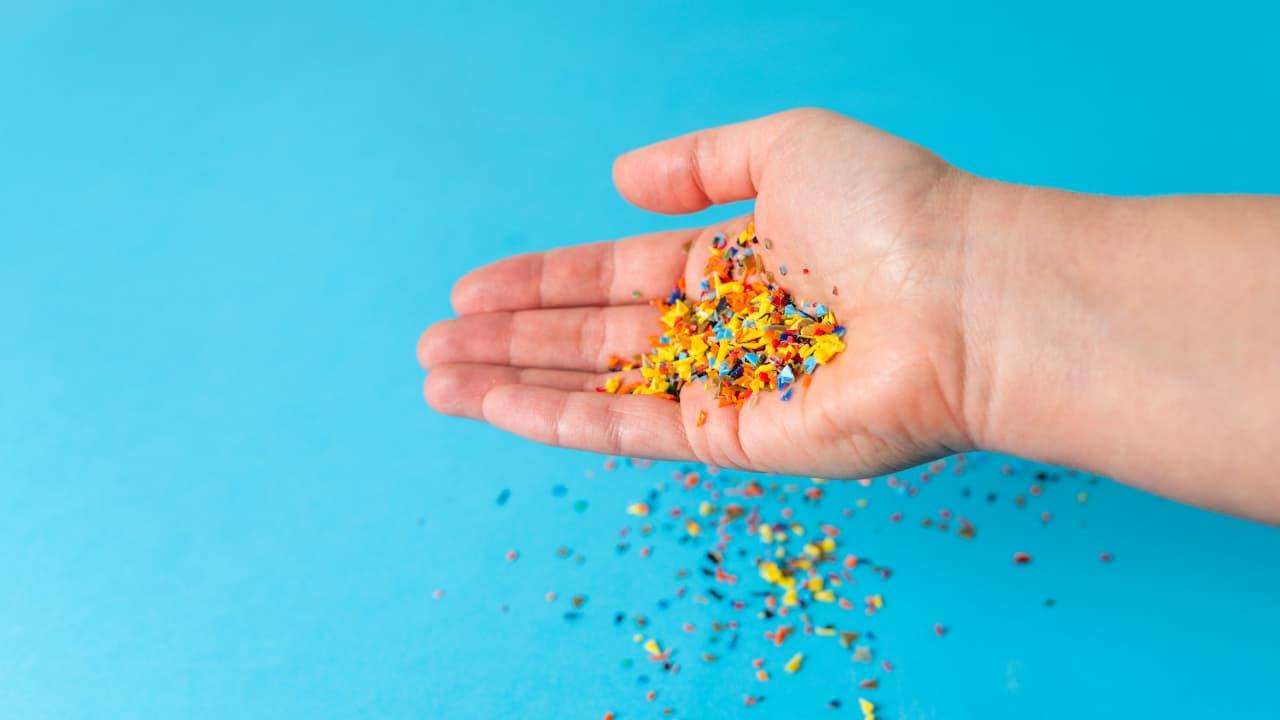Study Warns Of Severe Health And Environmental Risks From Tiny Plastics
The improper disposal of plastic waste, particularly very small plastic particles, has become a critical global issue. A recent study published in Environmental Research shows that the accumulation of micro- and nano-plastics (MNPs) is not only harming the environment but also creating serious dangers for human health.
What Are Micro- and Nano-Plastics?
Microplastics are small pieces of plastic smaller than 5 millimetres, while nanoplastics are even tinier, so small that they cannot be seen without a microscope. These tiny particles come from plastic items, synthetic fabrics, packaging, and disposable plastics. They are now present in soil, water, air, and even inside the food we consume.
Each year, more than 300 million tonnes of plastic are produced globally, with nearly half intended for single use. Since plastic does not break down easily, it can remain in the environment for hundreds or even thousands of years.
What Did the Study Find?
A group of scientists from universities in Pakistan, Australia, the United Arab Emirates, and other countries reviewed 228 research papers published between 2018 and 2025. These papers explored the impact of plastic pollution on soil, plants, human health, and waste management systems.
The researchers identified five main areas of concern: Effects on the environment, interactions with other pollutants, innovations in waste management, social and economic effects, and policies and regulations. Their findings show that micro and nano-plastics are widespread, and they are causing real harm.
Impact on Soil and Plants
The study shows that MNPs are harming soil quality and plant growth. These tiny plastics can interfere with how plants take in nutrients and water from the soil. Over time, this can lead to lower quality crops and reduced food production. Moreover, MNPs can combine with other harmful chemicals in the soil, increasing its toxicity. When crops grow in this polluted soil, the plastics can enter the food supply.
Risks to Human Health
Research shows that humans can ingest MNPs through contaminated food or polluted water. These particles may cause oxidative stress, damage cells, and affect various organs. While more research is needed, early signs suggest that prolonged exposure could lead to a range of health issues. Marine animals are also at risk. Fish and other sea creatures often eat microplastics, which can harm their health and even lead to death.
The Issue of Poor Plastic Management
Globally, plastic waste is often not handled properly. Instead of being reused or recycled, large amounts of plastic end up in open dumps or are burned. In some agricultural areas, plastic films used to protect crops break down into microplastics, which stay in the soil long after the growing season is over.
A Circular Economy
The study strongly supports the idea of a circular economy, where materials are reused, recycled, and kept in use for longer. This approach includes reducing plastic production, encouraging the reuse of products rather than discarding them, investing in mechanical recycling methods instead of chemical methods, and developing better waste management systems.
Turning Waste into Useful Materials
The study also highlights some ways to repurpose plastic waste. For example, using shredded plastic in construction materials can make concrete stronger while reducing environmental impact. Researchers also mention that activated carbon made from plastic waste can help remove pollutants from soil and water.
Plastic pollution is a serious threat to ecosystems, food systems, and human health. By moving towards a circular economy and reducing the use of single-use plastics, we can start to address this growing crisis, before it's too late.
Legal Disclaimer:
MENAFN provides the
information “as is” without warranty of any kind. We do not accept
any responsibility or liability for the accuracy, content, images,
videos, licenses, completeness, legality, or reliability of the information
contained in this article. If you have any complaints or copyright
issues related to this article, kindly contact the provider above.
Most popular stories
Market Research

- Alt.Town Introduces $TOWN Token Utility Across Platform Services And Launches Valuefi Deposit Event
- BTCC Exchange Maintains 143% Total Reserve Ratio In September 2025 Demonstrating Continued Financial Strength
- Salvium Solves The Privacy Paradox: Salvium One Delivers Mica-Compliant Privacy That Exchanges Can List
- Zebu Live 2025 Welcomes Coinbase, Solana, And Other Leaders Together For UK's Biggest Web3 Summit
- Tapbit At TOKEN2049: Reshaping The Crypto Landscape Through Product Innovation
- Thrivestate Launches“Fly Before You Buy” Program, Enabling International Buyers To Explore Dubai Before Committing






















Comments
No comment